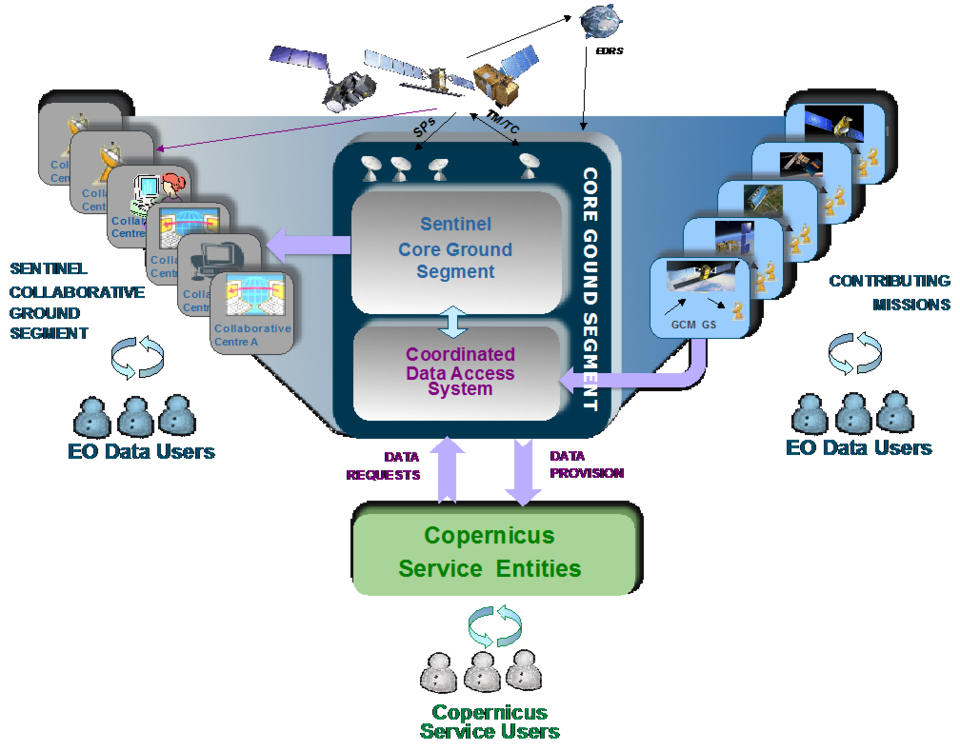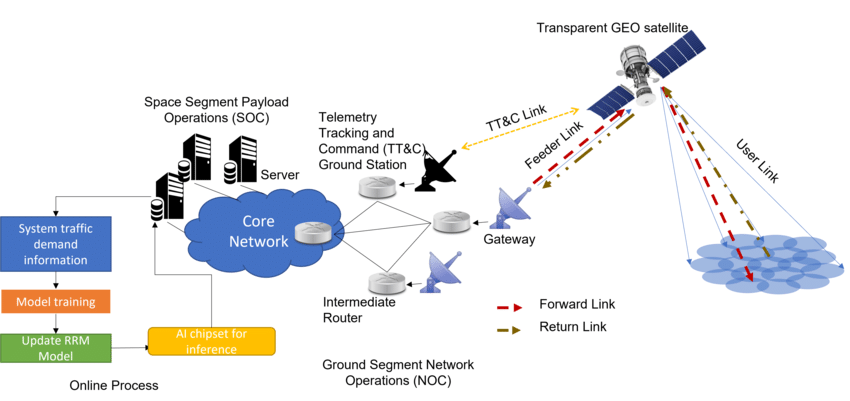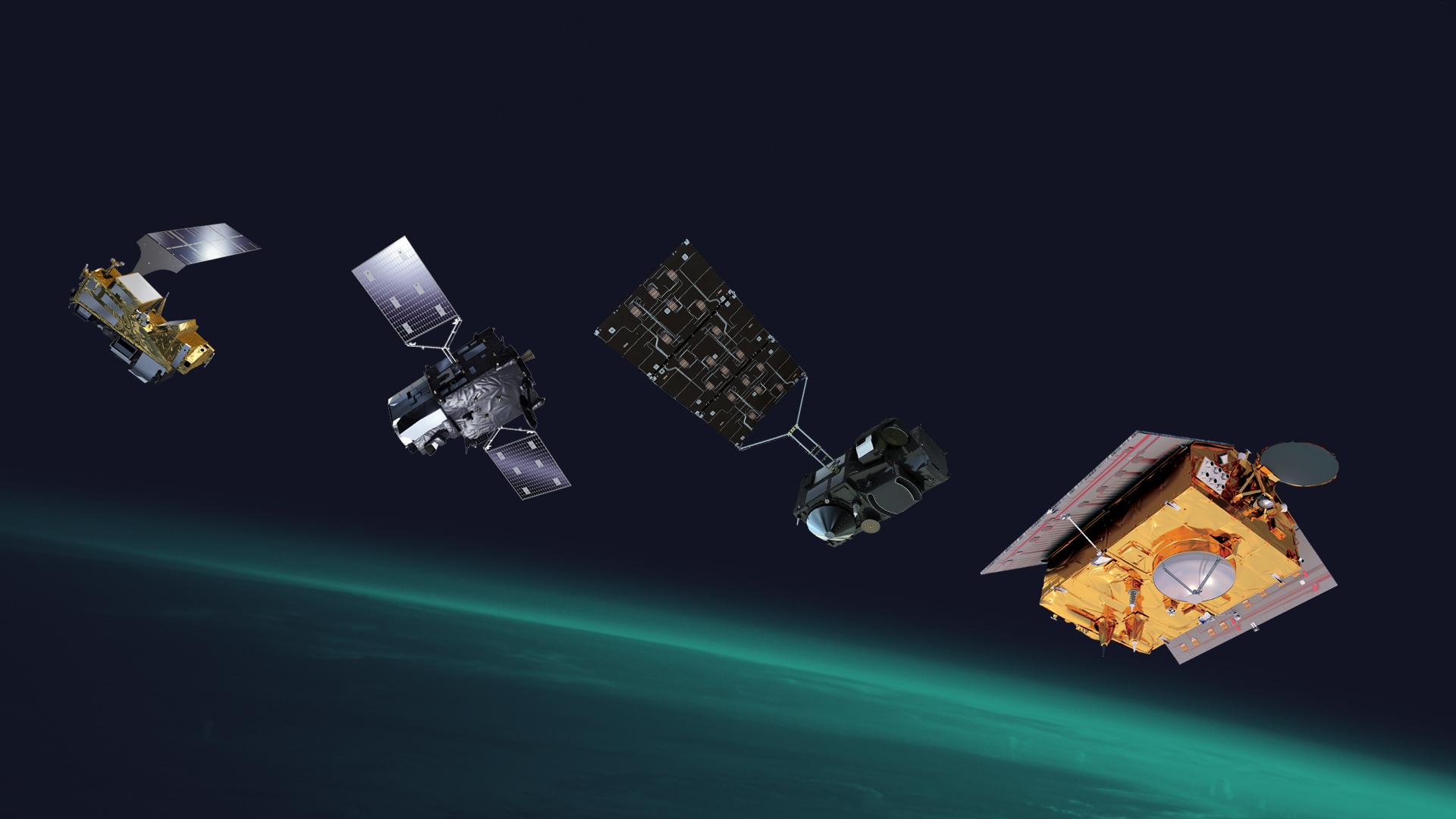| Sentinel-1A |
To provide all-weather, day-and-night Earth observation data for land and ocean monitoring. |
Land use mapping, ice cover monitoring, maritime safety, flood mapping, and disaster response. |
- C-band synthetic aperture radar (SAR)
|
April 3, 2014 |
Sun-synchronous, near-polar orbit |
| Sentinel-1B |
To provide all-weather, day-and-night Earth observation data for land and ocean monitoring, complementing Sentinel-1A. |
Land use mapping, ice cover monitoring, maritime safety, flood mapping, and disaster response. |
- C-band synthetic aperture radar (SAR)
|
April 25, 2016 |
Sun-synchronous, near-polar orbit |
| Sentinel-2A |
To provide high-resolution multispectral imagery for land cover mapping, vegetation monitoring, and water resource management. |
Land cover mapping, vegetation monitoring, water resource management, agricultural monitoring, and forestry management. |
- Multispectral instrument (MSI)
|
June 23, 2015 |
Sun-synchronous, near-polar orbit |
| Sentinel-2B |
To provide high-resolution multispectral imagery for land cover mapping, vegetation monitoring, and water resource management, complementing Sentinel-2A. |
Land cover mapping, vegetation monitoring, water resource management, agricultural monitoring, and forestry management. |
- Multispectral instrument (MSI)
|
March 7, 2017 |
Sun-synchronous, near-polar orbit |
| Sentinel-3A |
To provide continuous and accurate measurements of sea surface temperature, ocean color, and land surface temperature. |
Ocean monitoring, climate change research, marine meteorology, and fisheries management. |
- Sea and Land Surface Temperature Radiometer (SLSTR),
- Ocean and Land Colour Instrument (OLCI),
- Synthetic Aperture Radar Altimeter (SRAL)
|
February 16, 2016 |
Sun-synchronous, near-polar orbit |
| Sentinel-3B |
To provide continuous and accurate measurements of sea surface temperature, ocean color, and land surface temperature, complementing Sentinel-3A. |
Ocean monitoring, climate change research, marine meteorology, and fisheries management. |
- Sea and Land Surface Temperature Radiometer (SLSTR),
- Ocean and Land Colour Instrument (OLCI),
- Synthetic Aperture Radar Altimeter (SRAL)
|
April 25, 2018 |
Sun-synchronous, near-polar orbit |
| Sentinel-4 |
To provide continuous monitoring of atmospheric composition, including ozone, nitrogen dioxide, sulfur dioxide, and formaldehyde. |
Air quality monitoring, climate change research, and atmospheric modeling. |
- Total Ozone Parcel Instrument (TROPOMI)
|
October 21, 2017 |
Geostationary orbit |
| Sentinel-5P |
To provide atmospheric composition measurements, including greenhouse gases, aerosols, and trace gases. |
Air quality monitoring, climate change research, and atmospheric modeling. |
- Total Ozone Parcel Instrument (TROPOMI)
|
October 13, 2017 |
Sun-synchronous, near-polar orbit |
Sentinel-5A |
To provide atmospheric composition measurements, including ozone, nitrogen dioxide, sulfur dioxide, and formaldehyde. |
Air quality monitoring, climate change research, and atmospheric modeling. |
- Total Ozone Parcel Instrument (TROPOMI)
|
August 22, 2020 |
Sun-synchronous, near-polar orbit |
| Sentinel-6 |
To provide high-precision measurements of sea surface topography, significant wave height, and wind speed. |
Ocean monitoring, climate change research, maritime safety, and coastal zone management. |
- Poseidon-3 radar altimeter,
- microwave radiometer (MWR),
- synthetic aperture radar (SAR)
|
November 21, 2020 |
Sun-synchronous, near-polar orbit |



